We use information collected through cookies and similar technologies to improve your experience on our site, analyze how you use it and for marketing purposes.
Your privacy settings
We and our partners use information collected through cookies and similar technologies to improve your experience on our site, analyze how you use it and for marketing purposes. Because we respect your right to privacy, you can choose not to allow some types of cookies. However, blocking some types of cookies may impact your experience of the site and the services we are able to offer. In some cases, data obtained from cookies is shared with third parties for analytics or marketing reasons. You can exercise your right to opt-out of that sharing at any time by disabling cookies.
Manage Consent Preferences
Necessary
Always ON
These cookies and scripts are necessary for the website to function and cannot be switched off. They are usually only set in response to actions made by you which amount to a request for services, such as setting your privacy preferences, logging in or filling in forms. You can set your browser to block oralert you about these cookies, but some parts of the site will not then work. These cookies do not store any personally identifiable information.
Analytics
These cookies and scripts allow us to count visits and traffic sources, so we can measure and improve the performance of our site. They help us know which pages are the most and least popular and see how visitors move around the site. All information these cookies collect is aggregated and therefore anonymous. If you do not allow these cookies and scripts, we will not know when you have visited our site.
Embedded Videos
These cookies and scripts may be set through our site by external video hosting services likeYouTube or Vimeo. They may be used to deliver video content on our website. It's possible for the video provider to build a profile of your interests and show you relevant adverts on this or other websites. They do not directly store personal information, but are based on uniquely identifying your browser and internet device. If you do not allow these cookies or scripts it is possible that embedded video will not function as expected.
Google Fonts
Google Fonts is a font embedding service library. Google Fonts are stored on Google's CDN. The Google Fonts API is designed to limit the collection, storage, and use of end-user data to only what is needed to serve fonts efficiently. Use of Google Fonts API is unauthenticated. No cookies are sent by website visitors to the Google Fonts API. Requests to the Google Fonts API are made to resource-specific domains, such as fonts.googleapis.com or fonts.gstatic.com. This means your font requests are separate from and don't contain any credentials you send to google.com while using other Google services that are authenticated, such as Gmail.
Marketing
These cookies and scripts may be set through our site by our advertising partners. They may be used by those companies to build a profile of your interests and show you relevant adverts on other sites. They do not store directly personal information, but are based on uniquely identifying your browser and internet device. If you do not allow these cookies and scripts, you will experience less targeted advertising.
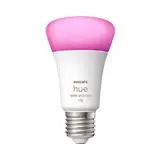
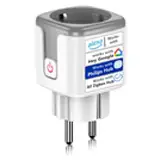
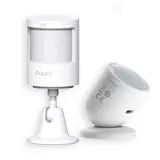
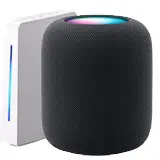
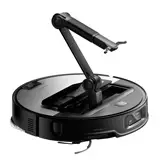

How to Choose a Smart Home System: A Beginner's Guide
Do you dream of a house that meets your needs? Can you imagine controlling the lights, temperature, and even the coffee maker from your phone? Welcome to the world of smart homes! Choosing the right system might seem complicated, but don't worry, this guide is designed for beginners like you.
What is a smart home?
A smart home is a home equipped with interconnected devices that can be controlled remotely. These devices, often referred to as "smart devices," can automate tasks, improve energy efficiency, and enhance security. In addition, the smart home devices allow users to customize their environment according to their preferences, from lighting control to temperature regulation. With the integration of voice assistants, interaction with these devices becomes even more intuitive and accessible. This technology not only makes daily life easier, but also promotes a more sustainable lifestyle by optimizing energy consumption.
Benefits of a smart home:
How to Choose Your Smart Home System: A Step-by-Step Guide
Before you jump into buying gadgets, you need to figure out your needs and priorities. Think about what areas of your life you want to improve with smart home technology. Here's a step-by-step guide to help you make the best decision.
1. Define your needs and priorities.
Ask yourself these key questions:
For example, if your main concern is security, you could prioritize installing smart security cameras and smart locks. If you're looking to save energy, a smart thermostat and smart LED light bulbs would be a good investment.
2. Choose a platform or ecosystem
A smart home platform is the "brain" of your system. It lets different devices communicate with each other and with you. Some popular platforms include:
Choosing the platform is crucial because it will determine which devices you can use. Make sure the platform you choose is compatible with the devices you already have or plan to buy.
Think about compatibility with protocols like Zigbee and Z-Wave. These protocols allow devices to talk to each other even if they're not from the same brand.
3. Research and compare smart devices
Once you've picked a platform, it's time to research and compare smart devices. Read reviews, compare prices, and make sure the devices are compatible with your chosen platform. Some popular devices include:
"Smart Home Platform Comparison Table:"
4. Plan the installation
Some devices are easy to install, while others require the help of a professional. Consider your technical skills and the time you're willing to invest. Plan the location of the devices and make sure you have a stable Wi-Fi connection.
5. Set up and customize your system
Once you've set up the devices, it's time to configure and personalize them. Create routines and automations to make your smart home run on its own. For instance, you can set the lights to turn on automatically at sunset or the thermostat to adjust to a comfortable temperature before you get home.
Smart Home Recommendations and Best Practices
To get the most out of your smart home system, follow these tips:
Examples of smart home automations:
Smart home security and privacy
Security and privacy are crucial aspects to consider when setting up a smart home. Here are some additional tips:
Troubleshooting
Even with the best planning, problems can still come up. Here are some tips for troubleshooting common issues:
Conclusion: Start building your smart home today!
Choosing a smart home system can be an exciting and rewarding task. By following this guide, you can make informed decisions and create a home that is more comfortable, efficient and secure. Remember to define your needs, choose a suitable platform, research devices and plan for installation. Don't forget security and privacy. Also, it is critical to consider the scalability of the system, as you may want to add devices or features in the future. The benefits of a smart home include energy savings, day-to-day comfort and increased security, making it a valuable investment. Finally, keeping up to date on the latest trends and technologies will allow you to optimize your home according to your changing needs. It is also essential to keep abreast of the latest trends and technologies in the market, as home automation is advancing rapidly. There are several home automation applications that can facilitate the management of devices and optimize their operation. Finally, don't forget to consider compatibility between the devices and platforms you choose to ensure a smooth and satisfactory experience. In addition, explore the different home automation options that fit your daily routines. Consider how devices interact with each other to maximize the functionality and efficiency of your system. With proper planning, your smart home will not only be a haven of comfort, but also a showcase of innovation and technology.
Now that you've got the necessary tools, it's time to start building your smart home! Share this article with your friends and family who are interested in smart home technology. Leave a comment with your questions or experiences.
Related Posts
TOP 10 Must-Have Smart Home Devices
Do you dream of a home that understands you, adapts to your needs and makes your life easier? Home automation, or smart homes, are no longer a thing of the future. They are an accessible reality that can transform your daily life. In this article, we present the 10 must-have devices to turn your home into a smart home.
What is a smart home and how can it improve your life?
Imagine this: You wake up to sunlight streaming gently through the window. The coffee maker is already brewing your favorite coffee and the music that encourages you to start the day begins to play. All this, without you having to lift a finger. Does it sound like science fiction? No! It's the reality of a home ...
How much does it cost to automate a house? Budget-friendly and premium options
Dreaming of a smart home? Lights that turn on by themselves, thermostats that adjust to your liking and blinds that lower at dusk. Home automation is no longer a thing of the future, it's the present! But how much does it cost to make this dream a reality? The answer, like almost everything in life, is: it depends. Let's ...
First steps to automate your home
Can you imagine coming home and having the lights turn on by themselves, your favorite music start playing and the temperature is perfect? Home automation is no longer a thing of the future; it's here, it's affordable and it can make your life more comfortable and efficient. But where do you start? This article will guide you step by step ...